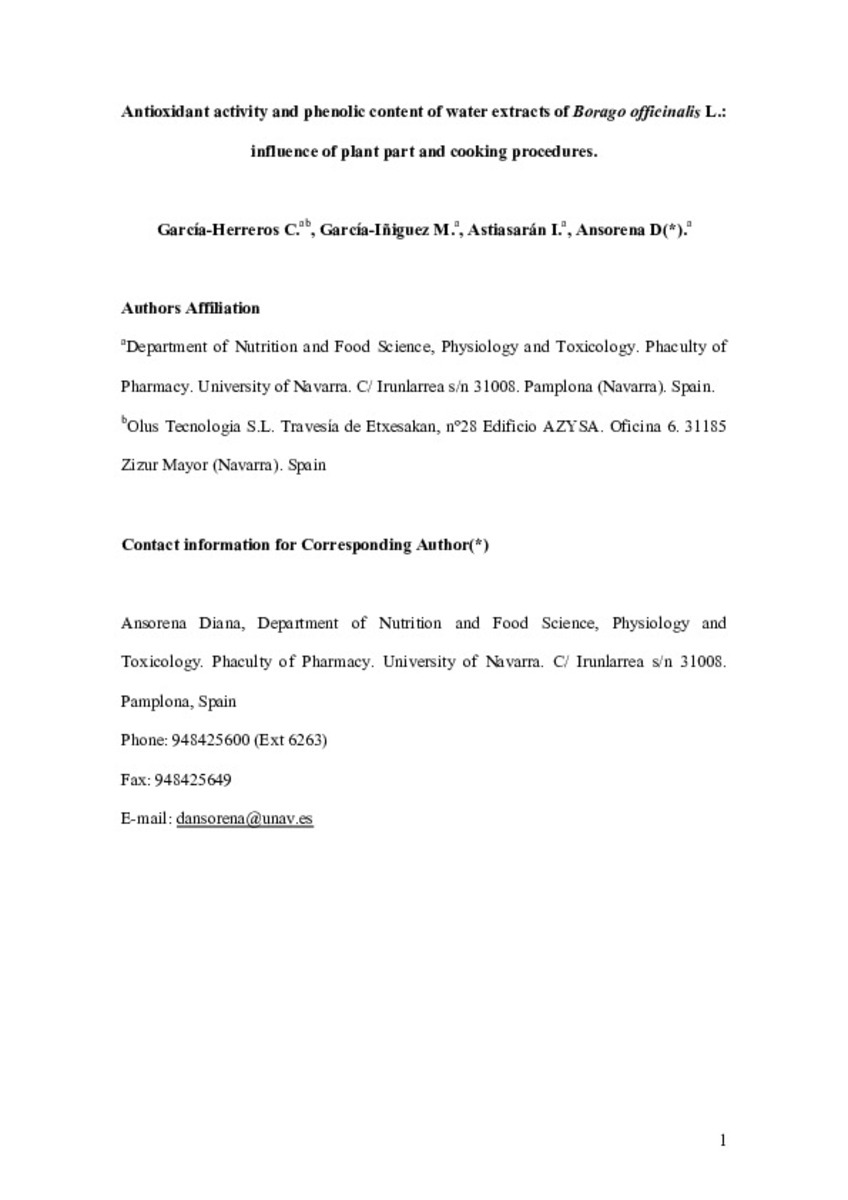Antioxidant activity and phenolic content of water extracts of Borago officinalis L: influence of plant part and cooking procedures
Keywords:
ABTS
Boiling
Borage
DPPH
Steaming
Publisher:
Chiriotti Editori
Citation:
García-Herreros C, García-Iñiguez M, Astiasarán I, Ansorena D. Antioxidant activity and phenolic content of water extracts of Borago officinalis L: influence of plant part and cooking procedures. Ital J Food Sci 2010;22(2):156-164
Statistics and impact
0 citas en

0 citas en

Items in Dadun are protected by copyright, with all rights reserved, unless otherwise indicated.











